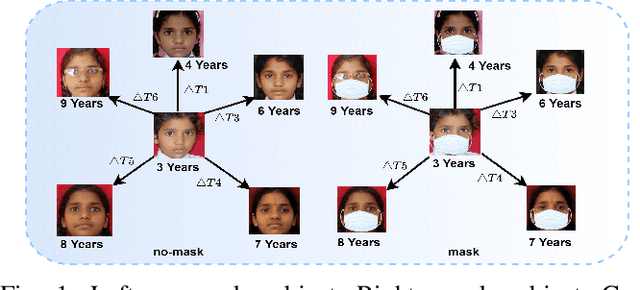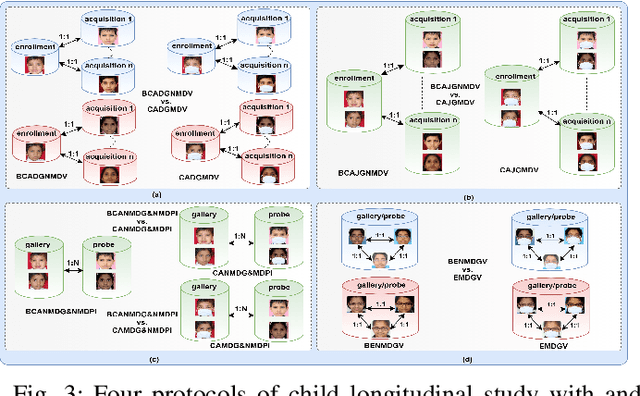Longitudinal Analysis of Mask and No-Mask on Child Face Recognition
Paper and Code
Nov 19, 2021



Face is one of the most widely employed traits for person recognition, even in many large-scale applications. Despite technological advancements in face recognition systems, they still face obstacles caused by pose, expression, occlusion, and aging variations. Owing to the COVID-19 pandemic, contactless identity verification has become exceedingly vital. To constrain the pandemic, people have started using face mask. Recently, few studies have been conducted on the effect of face mask on adult face recognition systems. However, the impact of aging with face mask on child subject recognition has not been adequately explored. Thus, the main objective of this study is analyzing the child longitudinal impact together with face mask and other covariates on face recognition systems. Specifically, we performed a comparative investigation of three top performing publicly available face matchers and a post-COVID-19 commercial-off-the-shelf (COTS) system under child cross-age verification and identification settings using our generated synthetic mask and no-mask samples. Furthermore, we investigated the longitudinal consequence of eyeglasses with mask and no-mask. The study exploited no-mask longitudinal child face dataset (i.e., extended Indian Child Longitudinal Face Dataset) that contains $26,258$ face images of $7,473$ subjects in the age group of $[2, 18]$ over an average time span of $3.35$ years. Due to the combined effects of face mask and face aging, the FaceNet, PFE, ArcFace, and COTS face verification system accuracies decrease approximately $25\%$, $22\%$, $18\%$, $12\%$, respectively.
 Add to Chrome
Add to Chrome Add to Firefox
Add to Firefox Add to Edge
Add to Edge